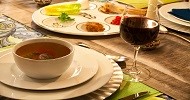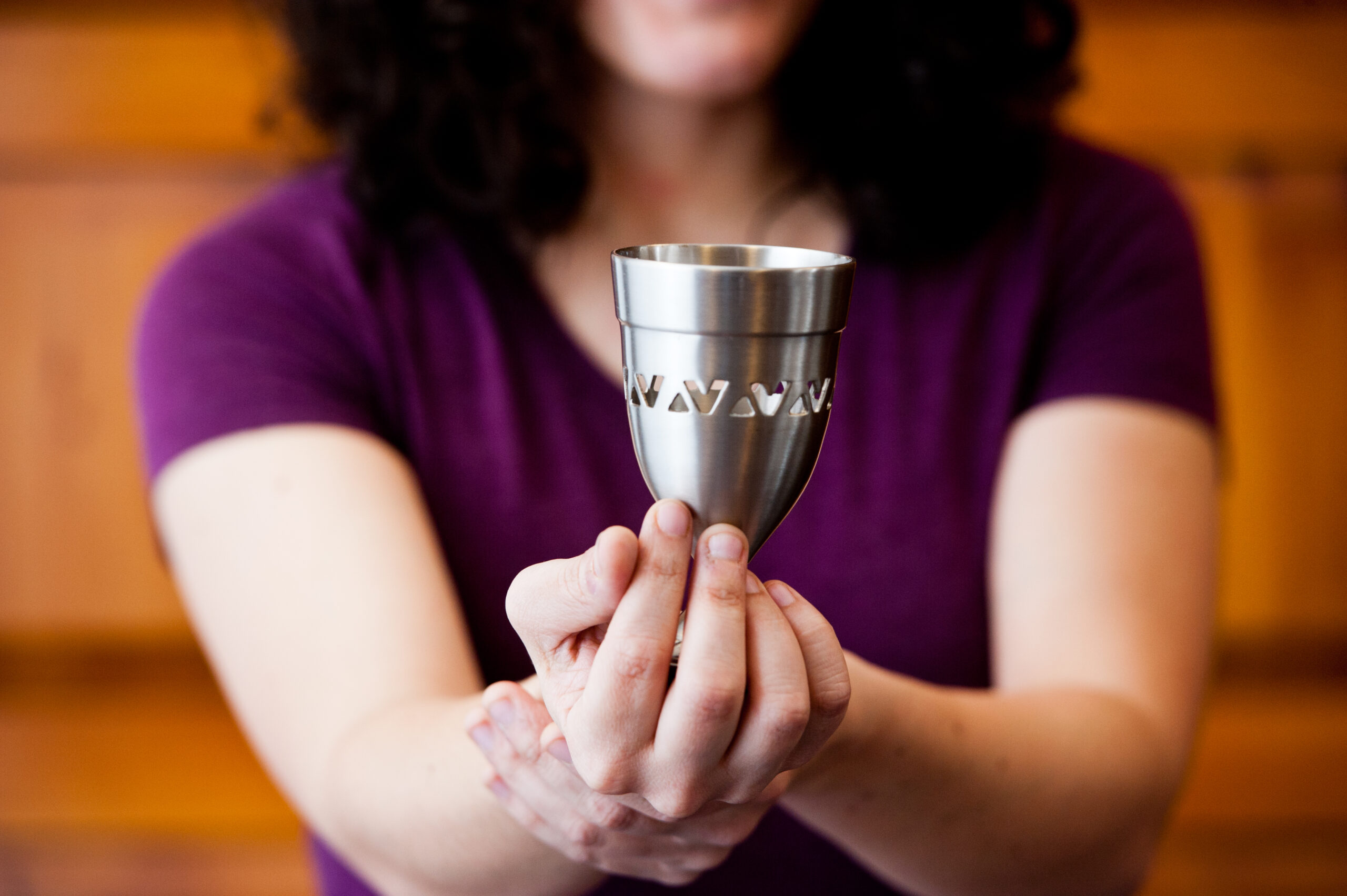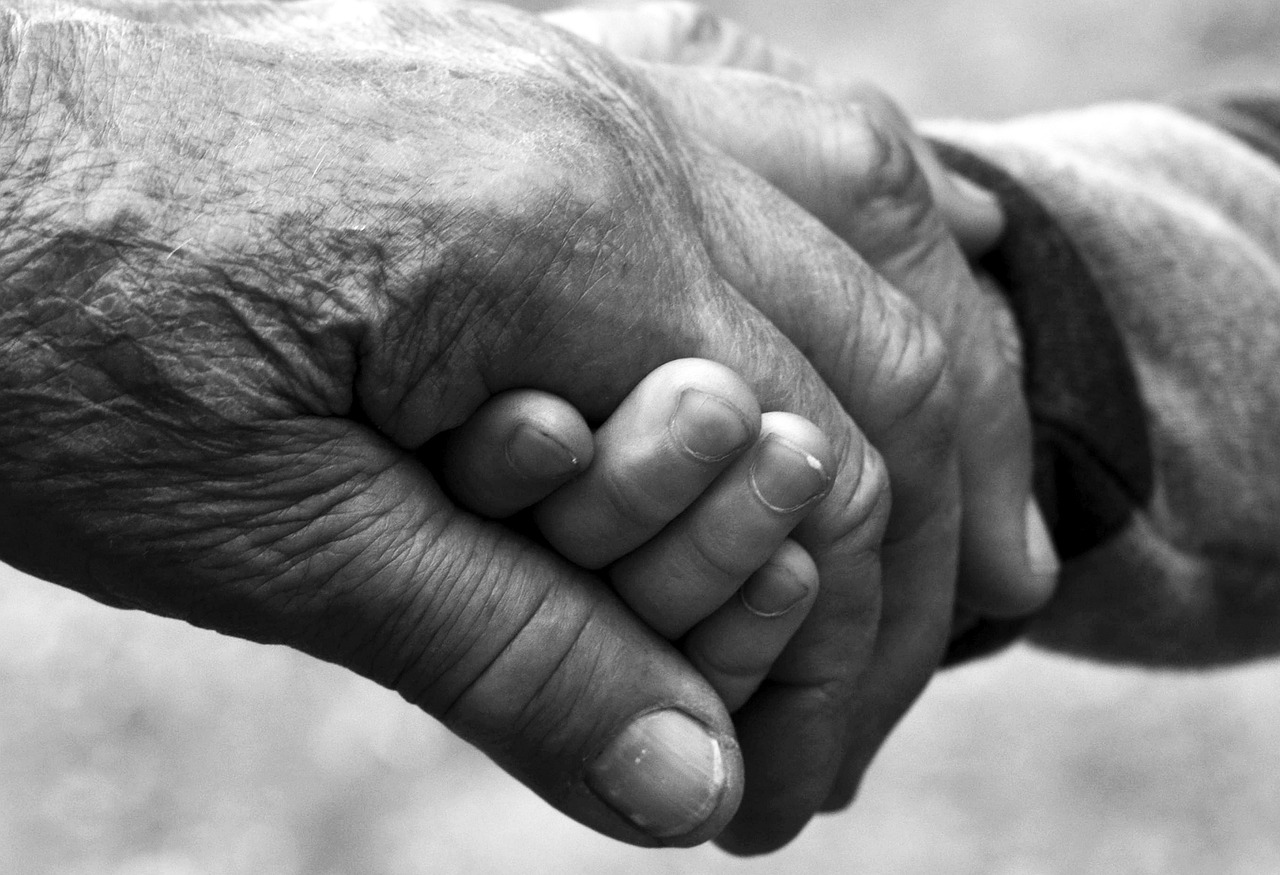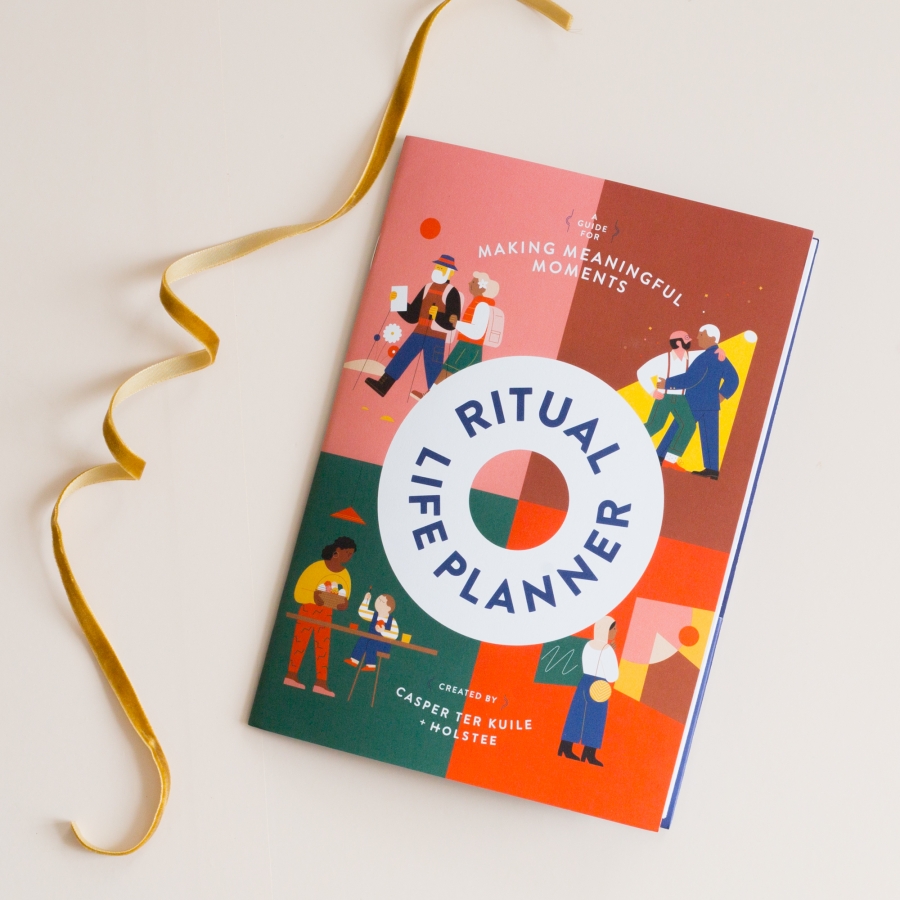The seder table is the central physical space around which the seder unfolds. Even if you choose to hold part of your seder away from the table in a more comfortable space, your table should reflect the festivity and sanctity of the holiday. Crowded with dishes, glasses, bottles of wine and/or grape juice, flowers (not too high), and haggadot, the table must also have room for the following:
1. Matzah: You need enough matzah for everyone to eat but also three ceremonial matzot that are placed somewhere near the center of the table in a large napkin or special matzah holder. If your seder is being held before Passover you might want to use egg matzah so that you can save “the real thing” for Passover. Some people use sh’mura matzah for the three ceremonial matzot. These matzot are handmade from wheat that has been watched from the time it was harvested.
2. The seder plate (k’ara): A traditional seder plate includes five or six symbolic foods: karpas, maror, z’roa, beitzah, charoset, and sometimes chazeret.
Karpas can be any vegetable for which the blessing over fruit of the earth is recited. Parsley or another green leafy vegetable is traditionally used. Jews of Eastern European descent sometimes use potatoes as it was the closest to a green vegetable that was often available during Passover.
For maror, bitter herbs, use horseradish root or a bitter lettuce. Put enough on the seder plate for everyone as the maror will be eaten during the seder.
The zro’a, shank bone, is a reminder of the Passover sacrifice. According to the Talmud (Tractate Pesachim 114b) vegetarians may substitute a raw beet, which also bleeds when cut. The zro’a is not eaten at the seder.
The beitzah is a roasted hard-boiled egg. It is included on the seder plate in remembrance of the holiday sacrifice offered at the Temple. It can also be seen as a symbol of creation and the cycle of life and death, as eggs are eaten by mourners after a funeral. The beitzah on the seder plate is not eaten or used during the seder.
The charoset is a mixture of wine, fruits, nuts, honey and spices that symbolizes the mortar with which the Israelites made bricks during slavery. Askenazi charoset is usually made of apples, nuts, sweet wine, honey or sugar and cinnamon. Sephardic charoset recipes contain dates, figs, apricots almonds and less or no wine. Make plenty of charoset, as it is always a favorite.
The sixth optional item on the seder plate is chazeret, a second bitter herb, which is added to the Hillel sandwich. You can use romaine lettuce or prepared horseradish for chazeret.
Many feminists also add an orange to their seder plates.
While all seder tables should include at least one central seder plate, some people prepare individual seder plates for each person. These plates should include all the ritual foods that will be eaten during the seder but they don’t have to include the beitzah or the z’roa.
3. Elijah’s Cup: Place an Elijah’s Cup at the center of the table. The cup should look different from all other cups on the table. Fill the cup with wine at the beginning of the seder or leave the cup empty for most of the seder and fill it before singing Eliyahu Hanavi.
4. Miriam’s Cup: A Miriam’s Cup is a new ritual object that is placed on the seder table beside the Cup of Elijah. Miriam’s Cup is filled with water close to the beginning of the seder. See Miriam’s Cup for more.
5. Tambourine: Include tambourines on your table to offer children as well as adults an additional way to rejoice and participate. The instrument is deeply connected to the story of the Exodus as it was used by Miriam and the Israelite women when they danced and sang at the shores of the Red Sea after having successfully left Egypt and escaped the Egyptian army (Exodus 15:20).
6. Tzedakah box: At communal seders before Pesach or on interim nights include tzedakah boxes on your tables and donate it to a different organization or cause linked to Jewish women each year. If your seder is being held during Passover itself and you do not handle money on holidays (for Jewish legal reasons) we suggest that you put the tzedakah box near your candles and collect money before you light candles on the first night.
7. Other items: candlesticks and candles; a bowl with salt water for dipping the karpas; a pitcher of water and a bowl for hand-washing; hard-boiled eggs for before the meal (optional); pillows for sitting comfortably like free people; a plate of scallions reminiscent of the onions that sustained the Israelites in Egypt (Numbers 11:5) and the whips of the Egyptian taskmasters. These scallions are used by Iranian Jews during the Dayeinu in a playful reenactment of the taskmaster’s whipping.

